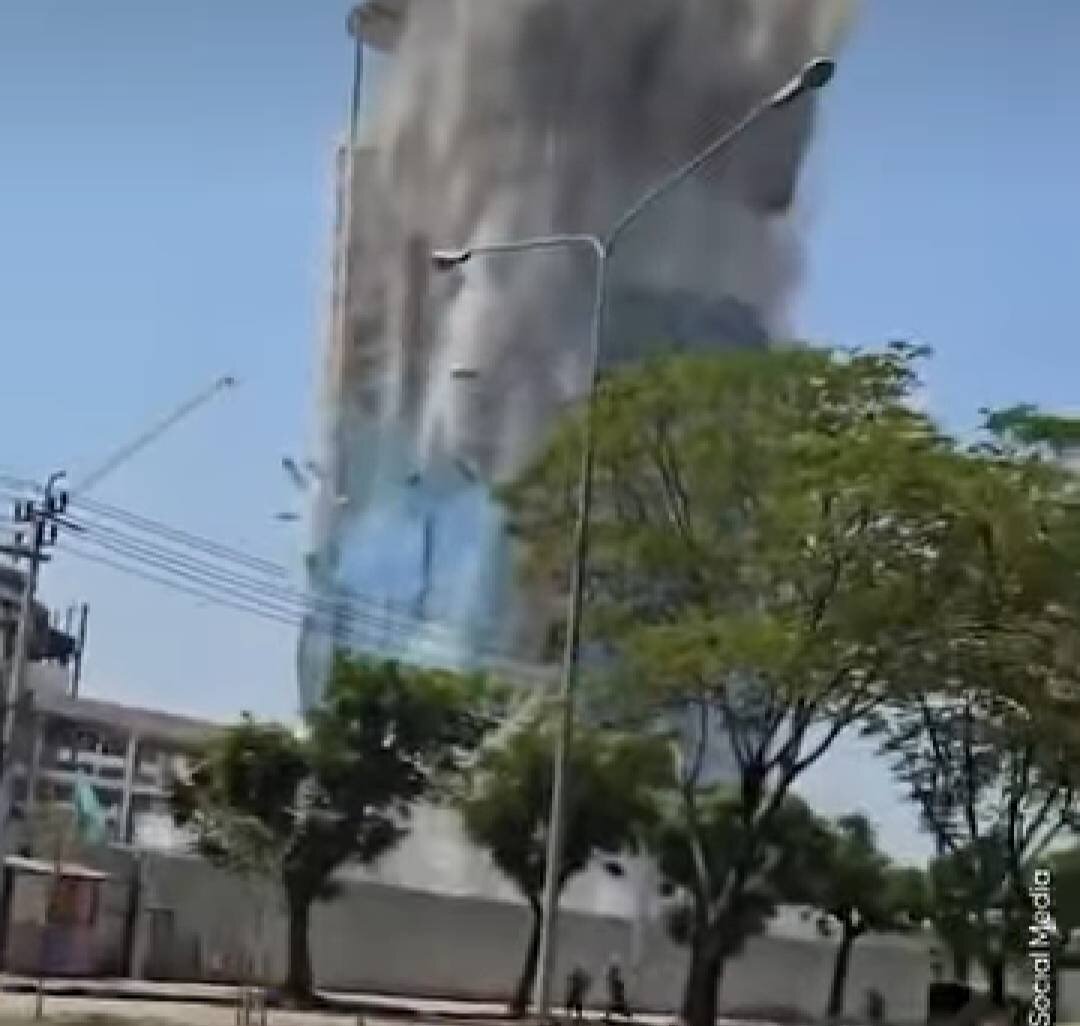Bangkok Skyscraper Under Construction Damaged by Devastating Myanmar Earthquake
A powerful earthquake measuring 7.7 on the Richter scale struck Myanmar’s Sagaing Region on Friday, leaving at least 43 workers feared trapped under debris. This seismic event, followed by a secondary quake of 6.4 magnitude just 12 minutes later, has raised concerns but, fortunately, there have been no confirmed casualties reported so far.
The Sagaing Region, situated in the northwestern area of Myanmar, is home to a population exceeding 5 million residents. The region has experienced significant structural damage, as evidenced by images circulating in local media, showing collapsed buildings and damaged roads.
Here are the key details surrounding this seismic event:
- Magnitude: The initial quake was recorded at 7.7, while the aftershock registered at 6.4.
- Location: The epicenter was in the Sagaing Region, a densely populated area.
- Aftermath: At least 43 workers are suspected to be trapped under the rubble.
- Casualties: Fortunately, no casualties have been confirmed as of this report.
- Local Response: Emergency services are likely mobilizing to assess the damage and rescue trapped individuals.
The impact of such natural disasters can be devastating, and the affected communities often require immediate assistance. The local government and international organizations may need to coordinate their efforts to provide relief and support to the survivors and those displaced by the earthquake.
Following the earthquake, various news outlets reported the extensive damage to infrastructure. The affected buildings and roads highlight the need for strategic planning in earthquake-prone areas. Here are some considerations for future preparedness:
- Building Codes: Implementing stricter building regulations could minimize damage in future quakes.
- Emergency Kits: Encouraging families to prepare emergency kits with essential supplies can save lives.
- Community Drills: Regular earthquake drills in schools and workplaces can help people respond effectively during an emergency.
- Awareness Programs: Educating the public about earthquake safety and preparedness is crucial.
The US Geological Survey reported the quakes and continues to monitor the situation closely. Earthquakes of this magnitude can lead to secondary disasters, such as landslides, which pose additional risks to the affected regions. As the situation develops, more information will likely emerge about the extent of the damage and the ongoing rescue efforts.
In the coming days, local authorities will likely conduct thorough assessments to determine the full impact of the earthquakes. It is vital for the community to come together and support those in need during this challenging time. The resilience of the people in Sagaing Region will be tested, but with collective action and support, recovery is possible.
As rescue operations begin, it is crucial to stay informed through reliable news sources. The aftermath of such natural disasters often requires ongoing support from both governmental and non-governmental organizations to ensure that the affected communities can rebuild and recover.
In conclusion, while the immediate focus remains on rescuing those trapped and assessing the damage, it is equally important to reflect on the lessons learned from this event. Preparedness and community resilience are key factors in mitigating the impacts of future earthquakes. We must remain vigilant and proactive in ensuring safety for all residents in earthquake-prone areas like the Sagaing Region.






